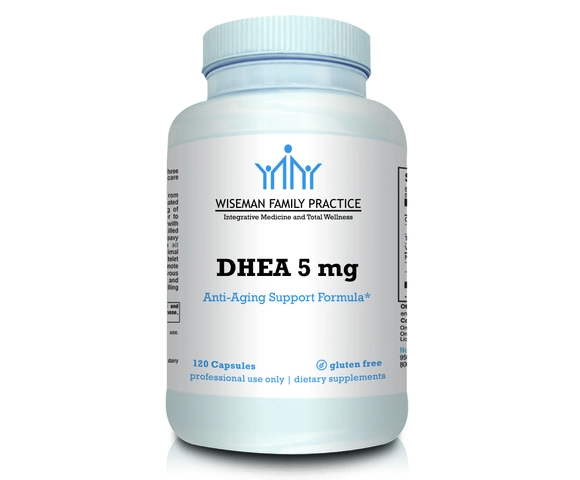TL;DR:
- Pravachol is the brand name for pravastatin, a statin that lowers LDL cholesterol.
- Typical adult dose ranges from 10mg to 80mg once daily, taken with or without food.
- Common side effects include muscle aches, headache, and digestive upset; rare but serious risks are liver problems and severe muscle injury.
- Always tell your doctor about other meds, especially grapefruit products, antibiotics, or antifungals.
- Follow a heart‑healthy diet, stay active, and schedule regular blood tests to keep the treatment on track.
What is Pravachol and Who Uses It?
Pravachol is the trade name for pravastatin sodium, a member of the statin family. Statins work by blocking an enzyme called HMG‑CoA reductase, which the liver needs to make cholesterol. By curbing that enzyme, pravastatin reduces low‑density lipoprotein (LDL) - the “bad” cholesterol - and modestly raises high‑density lipoprotein (HDL), the “good” cholesterol.
Doctors prescribe Pravachol primarily for:
- People with high LDL or total cholesterol levels.
- Patients who have already had a heart attack, stroke, or peripheral artery disease.
- Those with a family history of early‑onset heart disease.
- Anyone needing cholesterol control who can’t tolerate more potent statins because of side‑effects.
The drug is approved for adults 18years and older, and in the United States it’s also listed as safe for use in children 8years and up when a pediatric specialist recommends it.
How Pravachol Works and Dosage Recommendations
Pravastatin blocks the conversion of HMG‑CoA to mevalonate, the first step in cholesterol synthesis. The result is less cholesterol circulating in the blood, less buildup on artery walls, and a lower risk of cardiovascular events.
Dosing depends on the patient’s baseline LDL level, overall cardiovascular risk, and how they respond to the medication. Below is a practical dosage chart widely used in clinical practice:
| Indication | Typical Starting Dose | Maximum Recommended Dose | Frequency |
|---|---|---|---|
| Primary hypercholesterolemia (moderate risk) | 10mg once daily | 40mg once daily | Oral, any time of day |
| Secondary prevention after MI or stroke | 20mg once daily | 80mg once daily | Oral, preferably in the evening |
| Familial hypercholesterolemia | 40mg once daily | 80mg once daily | Oral, with or without food |
Key points for taking Pravachol safely:
- Take it at the same time each day. Consistency helps keep blood levels steady.
- Swallow the tablet whole; don’t crush or chew unless your doctor says it’s okay.
- If you miss a dose, take it as soon as you remember-unless it’s almost time for the next dose. In that case, skip the missed one and continue with your regular schedule.
- Ask your doctor to check liver enzymes (ALT/AST) before starting and periodically thereafter. Elevated values can signal liver stress.
- Pregnant or nursing women should not use pravastatin; the drug can affect fetal development.
Common Side Effects and Safety Precautions
Most people tolerate Pravachol well, but like any medication, it carries a risk profile. Here’s a quick rundown of what to watch for.
Frequent (≥1%)
- Muscle pain or weakness (myalgia)
- Headache
- Abdominal discomfort, nausea, or constipation
- Dizziness
Less common but serious
- Rhabdomyolysis - a rare breakdown of muscle tissue that can damage kidneys. Symptoms include severe muscle pain, dark urine, and rapid fatigue.
- Elevated liver enzymes or hepatitis - watch for yellowing of skin/eyes, dark urine, or persistent nausea.
- Allergic reactions - rash, itching, swelling, or breathing difficulties.
Risk factors that increase the chance of severe muscle injury include:
- High doses (≥80mg) combined with certain antibiotics (e.g., clarithromycin) or antifungals (e.g., itraconazole).
- Pre‑existing kidney disease.
- Excessive alcohol use.
- Hypothyroidism that isn’t treated.
If any of the serious symptoms appear, stop the medication and contact a healthcare professional immediately.

Practical Tips for Managing Your Pravachol Therapy
Keeping cholesterol in check isn’t just about popping a pill. Pairing pravastatin with lifestyle tweaks improves outcomes and may let you stay on a lower dose.
- Adopt a heart‑healthy diet. Focus on oats, beans, nuts, fatty fish, and plenty of fruits/vegetables. Limit saturated fats, trans fats, and added sugars.
- Exercise most days of the week - aim for 150 minutes of moderate aerobic activity (brisk walking, cycling) or 75 minutes of vigorous activity.
- Maintain a healthy weight. Even a 5‑10% weight loss can lower LDL by 5‑10%.
- Stay hydrated, especially if you experience muscle soreness. Good fluid intake helps kidneys clear any muscle breakdown products.
- Ask your pharmacist about over‑the‑counter supplements. Some herbal products (e.g., St.John’s wort) can interfere with pravastatin metabolism.
- Schedule follow‑up lipid panels about 6‑8 weeks after starting or adjusting dose, then annually if stable.
When you visit your doctor, bring a list of all medications, vitamins, and herbal products you use. This makes it easier to spot potential drug‑drug interactions.
Mini‑FAQ: Quick Answers You Might Need
- Can I take Pravachol with grapefruit juice? Pravastatin is less affected by grapefruit than other statins, but it’s still wise to limit large amounts.
- Is it okay to stop Pravachol if my cholesterol improves?
- Do I need to avoid alcohol while on Pravachol?
- What should I do if I forget a dose?
- Can women who are planning pregnancy use Pravachol?
No. Statins work as long as you stay on them. Stopping abruptly can cause cholesterol to rebound and raise heart‑attack risk.
Moderate drinking (up to one drink a day for women, two for men) is generally safe, but heavy consumption can increase liver stress and muscle pain.
Take it as soon as you remember, unless it’s almost time for the next dose. Then skip the missed one.
Statins are contraindicated during pregnancy. Discuss alternative cholesterol‑lowering strategies with your doctor before trying to conceive.
Next Steps & Troubleshooting
If you’ve just started Pravachol, give it 4‑6 weeks before expecting a noticeable drop in LDL. If you don’t see the expected reduction, talk to your doctor about:
- Increasing the dose (if you’re on the low end).
- Adding a second lipid‑lowering agent such as ezetimibe.
- Re‑evaluating diet and exercise adherence.
- Checking for drug interactions that might blunt efficacy.
Should muscle pain persist or liver tests rise, your clinician may switch you to a different statin (e.g., rosuvastatin) or try a non‑statin option like PCSK9 inhibitors.
Remember, cholesterol management is a marathon, not a sprint. Consistency with medication, lifestyle, and monitoring will give you the best chance at a healthy heart.










ADETUNJI ADEPOJU September 20, 2025
Oh, the moral high ground of prescribing pravastatin-because nothing says "I care" like slapping a patient with a HMG‑CoA reductase inhibitor while simultaneously lecturing them about dietary trans‑fat avoidance. The therapeutic algorithm is practically a gospel, complete with dosage titration charts that read like liturgical texts. Yet, the underlying assumption that everyone must bow to the statin monolith remains as charmingly naïve as a kindergarten sermon on cholesterol. One might argue that the emphasis on liver enzyme monitoring is less about safety and more about bureaucratic ritualism, a veritable rite of passage for the modern medic. And let’s not forget the ever‑present warning about grapefruit-because apparently citrus fruits are the ultimate pharmacological saboteurs. In short, the discourse surrounding pravastatin feels less like patient‑centered care and more like a self‑congratulatory parade of pharmaceutical pieties.
Janae Johnson September 21, 2025
Contrary to the prevailing hype, the mere presence of elevated LDL does not inexorably mandate pravastatin initiation; a disciplined dietary regimen coupled with aerobic exercise can achieve comparable lipid reductions in select cohorts. While the pharmacodynamics of HMG‑CoA reductase inhibition are well documented, clinical prudence demands a nuanced appraisal of individual risk factors before defaulting to pharmacotherapy. Moreover, the blind escalation to 80 mg without thorough assessment of renal function or concomitant drug interactions borders on therapeutic overreach.
Kayla Charles September 22, 2025
Welcome to the cholesterol club, where every member, regardless of age, gender, or socioeconomic status, can learn to tame their lipid profile without feeling like a guinea pig in a pharmaceutical trial. First and foremost, understand that pravastatin is merely one tool in a comprehensive toolbox that also includes nutrition, movement, and behavioral change. Begin by mapping out a heart‑healthy plate: fill half your plate with colorful vegetables, a quarter with lean protein such as fish rich in omega‑3s, and the remaining quarter with whole grains or legumes. This simple visual cue can dramatically lower dietary saturated fat, the chief contributor to endogenous LDL synthesis. Next, schedule at least 150 minutes of moderate‑intensity aerobic activity each week; if you find walking tedious, consider dancing, cycling, or even garden chores as viable alternatives. Consistency beats intensity-regular movement sustains metabolic flexibility and improves peripheral insulin sensitivity, both of which indirectly reduce LDL concentrations. When you do take pravastatin, adhere to a strict time‑keeping regimen; setting a daily alarm on your phone can prevent missed doses and maintain steady plasma concentrations. Pair your medication with adequate hydration-two to three liters of water per day helps the kidneys flush any myoglobin that might accumulate from subclinical muscle strain. Moreover, keep an up‑to‑date medication list, including over‑the‑counter supplements like coenzyme Q10, which some patients find beneficial for mitigating statin‑associated myalgia. Regular follow‑up labs, typically every six to eight weeks after dose adjustments, provide objective feedback and reassure both patient and clinician that the therapy is on track. If you ever notice dark urine, unexplained fatigue, or persistent abdominal discomfort, treat these signals as red flags and seek medical evaluation promptly; early detection of rhabdomyolysis or hepatotoxicity can prevent serious complications. Don’t let occasional setbacks discourage you; they are natural parts of any lifestyle transformation. Finally, cultivate a supportive community-share your goals with family, join online forums, or enlist a workout buddy-to foster accountability and celebrate incremental victories. Remember, managing cholesterol is a marathon, not a sprint; patience, perseverance, and partnership are your greatest allies on this journey.
Paul Hill II September 23, 2025
From a collaborative standpoint, I've seen that patients who get a baseline liver panel before starting pravastatin tend to feel more reassured and are more adherent to the regimen. It's also useful to cross‑check any antibiotics or antifungals the patient may be taking, as CYP‑mediated interactions can amplify muscle toxicity. In practice, I advise a gradual dose escalation-starting at 10 mg and monitoring for myalgia before moving up-to balance efficacy with tolerability. Encouraging patients to log any muscle soreness in a simple spreadsheet can help differentiate benign aches from early signs of rhabdomyolysis. Lastly, reminding folks to maintain a modest alcohol intake-no more than one drink for women, two for men-can mitigate hepatic strain while still allowing some social flexibility.
Stephanie Colony September 23, 2025
Patriotic health demands we reject foreign drug dominance and champion homegrown wellness solutions.